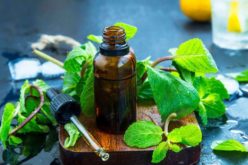Menstrual cramps (dysmenorrhea) are throbbing pains in the lower abdomen. They can start a few days before your period, or on day one of bleeding.
For some women, these cramps are mild and annoying.
Others experience debilitating pain that makes it difficult to continue with normal life. Period pain cramps are one of the most common reasons women miss days from school and work.
Why do you get menstrual cramps?
When you have your period, your uterus contracts as it expels its lining. These contractions are triggered by prostaglandins, hormone-like substances. Prostaglandins help your body control inflammation, blood flow and blood clots.
While prostaglandins are normal, higher levels can be a problem. They’re usually associated with more extreme period pain.
Menstrual cramps, and high prostaglandin levels, often relate to:
- Endometriosis
- Uterine fibroids
- Adenomyosis
- PCOS
- Pelvic inflammatory disease.
But, what if you have period cramps but don’t have any of these conditions?
In this instance, it’s possible you have high prostaglandins because of what you eat or high stress. Diets high in sugar, fat, dairy and processed foods can increase prostaglandins. If you suffer from period pain, cleaning up your diet and decreasing stress can help you feel better.
Symptoms of menstrual cramps
Menstrual cramps symptoms look different for each woman and can change each cycle. Intensity level can vary too, ranging from mild to debilitating.
Common menstrual cramps symptoms include:
- Lower abdominal cramps
- Dull ache in your belly
- Heavy feeling in your limbs
- Pain in your hips, lower back or thighs
- Bloating
- Abdominal gas
- Discomfort when having a bowel movement
It’s also possible to experience:
Severe menstrual cramps symptoms are sometimes called ‘Period Flu’. The experience usually begins just before your period and makes you feel… well, like you’re coming down with the flu. In reality, sickness isn’t the problem. It’s the hormones and prostaglandins associated with your period.
Key Takeaways
Menstrual cramps can be frustrating. And it seems like they’re becoming the norm.
However, just because period pain is common does NOT mean it’s normal.
If period cramps make it difficult for you to get through the day, it’s time to get help. But, who is the best health professional for you?
Doctors: Helpful for investigations and getting a diagnosis.
Naturopathy: Naturopaths recommend herbs, vitamins and dietary changes to decrease pain, inflammation and cramping. Practitioners aim to treat the root cause of your menstrual pain, not only the symptoms.
Acupuncture: Acupuncturists use acu-points to stimulate meridians and help remove energy stagnation in the uterus. When energy flows smoothly, pain is less likely.
If you need help treating menstrual cramps, Avaana can help you find experts in your area.
Find practitioners who treat Period Pain
FAQ
How do you relieve menstrual cramps?
If you have menstrual cramps, the following can help decrease your pain:
- Apply a heat pack to your lower abdomen
- Take a warm bath
- Listen to soothing music
- Meditate
- Pain relievers. Ibuprofen helps many women, but it has side effects. Natural options include magnesium, cramp bark, curcumin.
What makes period cramps worse?
Menstrual cramps are worse when prostaglandin levels are high. Things that increase prostaglandins include:
- Stress
- Diets high in sugar, fat, dairy and processed foods.
What do I eat to relieve period cramps?
It’s best to eat natural, unprocessed foods when you have menstrual cramps. These are easier to digest and less likely to trigger more pain. It’s also best to eat small amounts at a time, rather than a full meal. Cold foods and drinks can also make cramps worse. Bananas and steamed potatoes are usually the safest options for those in extreme pain.



